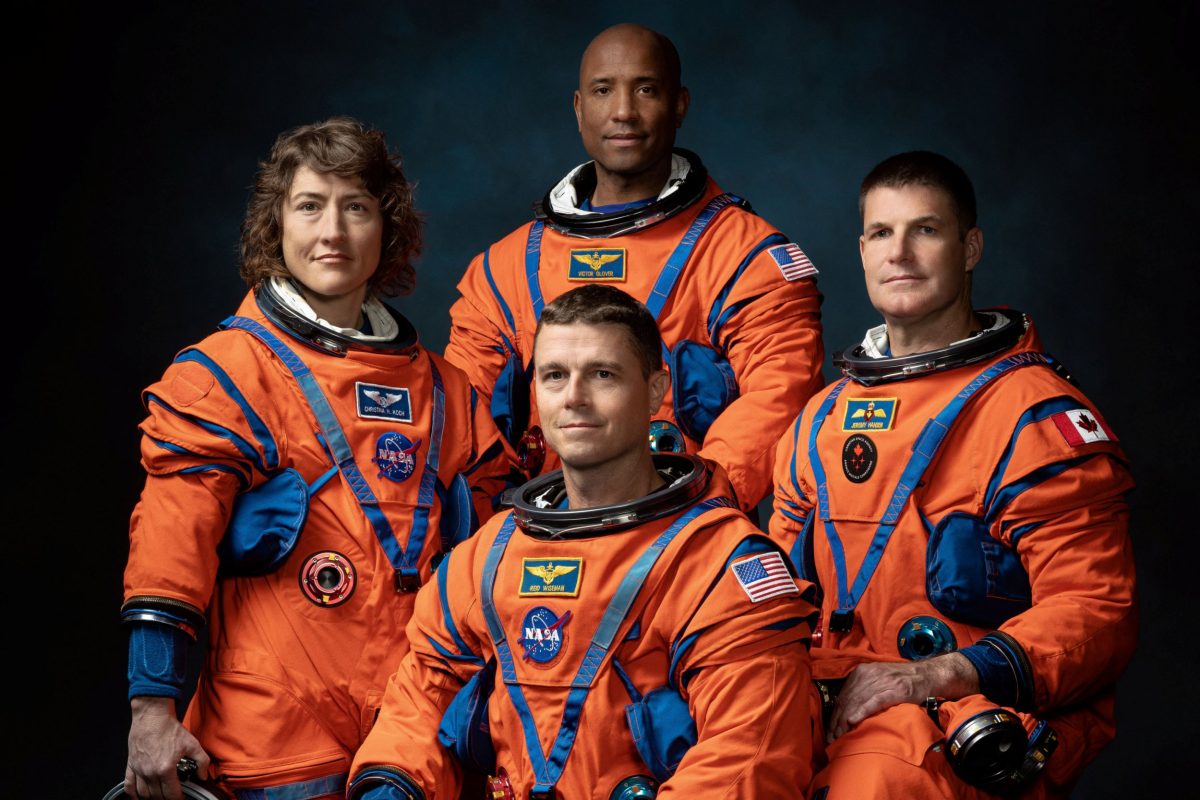Science
NASA’s Artemis II Mission: Aiming for the Moon and Beyond

NASA is set to launch its Artemis II mission in February 2024, marking the first crewed flight to the Moon in over 50 years. This ambitious mission will send four astronauts on a ten-day journey around the lunar body, paving the way for future lunar landings and the establishment of a permanent base on the Moon. While Artemis II will not land on the lunar surface, it represents a significant step toward deeper space exploration.
Critics argue that the Artemis program may be overly ambitious, suggesting that similar scientific objectives could be accomplished with less costly and less risky robotic missions. Nevertheless, advocates assert that crewed missions will yield invaluable benefits, ranging from technological advancements to potentially safeguarding humanity’s future.
Dr. Sarah Casewell, an astronomer at the University of Leicester, expressed enthusiasm about the mission. She stated, “The idea that we’re putting people back on the Moon is really exciting and aspirational for a young generation of people.” The return to the Moon raises questions about why humans ceased lunar expeditions after the last Apollo mission in 1972. Following the initial successes of the Apollo program from 1969 to 1972, including six landings that delivered twelve astronauts to the lunar surface, the space program lost momentum as funding and political priorities shifted.
The initial drive to explore the Moon was fueled by the intense competition between the United States and the Soviet Union during the Cold War. Once the U.S. achieved its goal of landing on the Moon, the justification for the high costs of space missions diminished. As a result, the program experienced stagnation, with few significant endeavors until recent years.
Revitalizing Lunar Exploration
NASA’s Artemis program has faced several challenges, including budgetary constraints and tragic incidents such as the space shuttle disasters. However, the current administration appears committed to the initiative. Originally proposed during the presidency of Donald Trump, the program has received continued support from his successor, Joe Biden. Trump has emphasized a desire to secure U.S. dominance in lunar exploration, aiming to ensure that America lands astronauts on the Moon before China and Russia can establish their presence.
China has made significant strides in lunar exploration, notably landing a spacecraft on the far side of the Moon in 2019 and returning soil samples from that region last year. Furthermore, plans for a joint China-Russia lunar base have been announced, intensifying the competition for lunar resources.
The timeline for Artemis II has recently been adjusted, with the mission potentially launching as early as February 2024, although delays are always a possibility. Despite Trump’s earlier budget cuts to NASA, which sparked outrage among space scientists, the Artemis missions have remained a priority, prioritizing lunar exploration over other projects.
Future Goals and Scientific Endeavors
The ultimate objective of the Artemis program is to establish a base on the Moon that would serve as a launchpad for future missions to Mars. Artemis II aims to take the crew further from Earth than any previous mission, venturing up to 9,000 miles beyond the Moon. The mission will also mark a historic milestone by sending the first woman and the first person of color into lunar orbit.
Looking ahead, Artemis III is scheduled to land astronauts on the Moon in 2027, with subsequent missions planned to establish a lunar base in the 2030s. NASA recently announced that this base will be powered by a nuclear reactor, a development that could have significant implications for lunar exploration and potential claims to lunar territory.
The benefits of the Artemis missions extend beyond national pride. They are expected to facilitate numerous scientific experiments, enhancing our understanding of how the human body copes with low gravity, cosmic radiation, and the extended duration of space travel. These insights are critical for planning future missions to Mars and beyond.
Astronauts will also collect soil and rock samples to study the Moon’s geology, a task that robots can perform but not as effectively as humans. Professor Mahesh Anand of the Open University remarked, “Humans go around and pick up samples that they find interesting. The speed at which you can do the work is more rapid than trying to use a rover that walks along the surface.”
The knowledge gained from these missions is expected to shed light on the formation of the solar system and the potential for discovering other planets capable of supporting life.
The Artemis program is not merely about exploration; it represents an opportunity to inspire future generations. Dr. Casewell noted that the initiative can ignite creativity and imagination in young people, fostering interest in science and technology that can benefit society in various ways.
As humanity prepares to return to the Moon, the Artemis missions stand as a testament to the pursuit of knowledge and the desire to explore the final frontier.
-

 Health3 months ago
Health3 months agoNeurologist Warns Excessive Use of Supplements Can Harm Brain
-

 Health3 months ago
Health3 months agoFiona Phillips’ Husband Shares Heartfelt Update on Her Alzheimer’s Journey
-

 Science2 months ago
Science2 months agoBrian Cox Addresses Claims of Alien Probe in 3I/ATLAS Discovery
-

 Science2 months ago
Science2 months agoNASA Investigates Unusual Comet 3I/ATLAS; New Findings Emerge
-

 Science1 month ago
Science1 month agoScientists Examine 3I/ATLAS: Alien Artifact or Cosmic Oddity?
-

 Entertainment5 months ago
Entertainment5 months agoKerry Katona Discusses Future Baby Plans and Brian McFadden’s Wedding
-

 Science1 month ago
Science1 month agoNASA Investigates Speedy Object 3I/ATLAS, Sparking Speculation
-

 Entertainment4 months ago
Entertainment4 months agoEmmerdale Faces Tension as Dylan and April’s Lives Hang in the Balance
-

 World3 months ago
World3 months agoCole Palmer’s Cryptic Message to Kobbie Mainoo Following Loan Talks
-

 Science1 month ago
Science1 month agoNASA Scientists Explore Origins of 3I/ATLAS, a Fast-Moving Visitor
-

 Entertainment2 months ago
Entertainment2 months agoLewis Cope Addresses Accusations of Dance Training Advantage
-

 Entertainment3 months ago
Entertainment3 months agoMajor Cast Changes at Coronation Street: Exits and Returns in 2025









